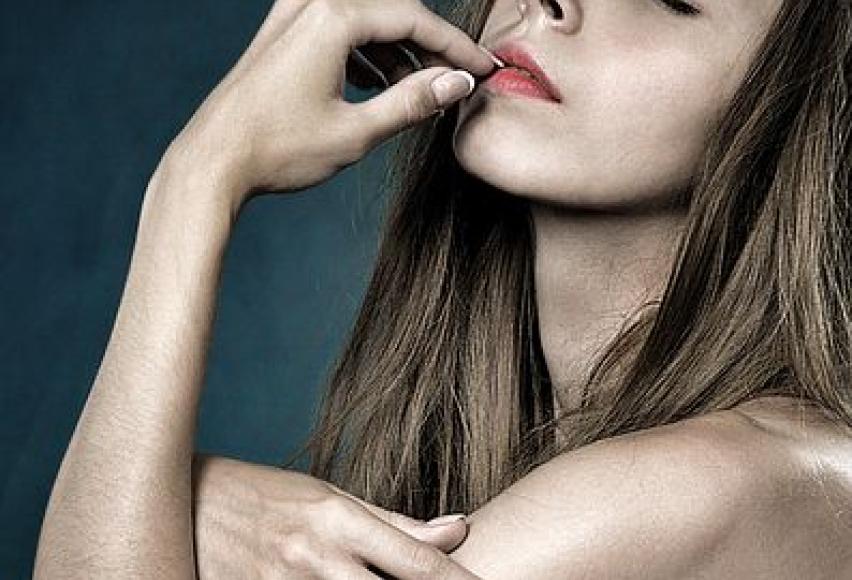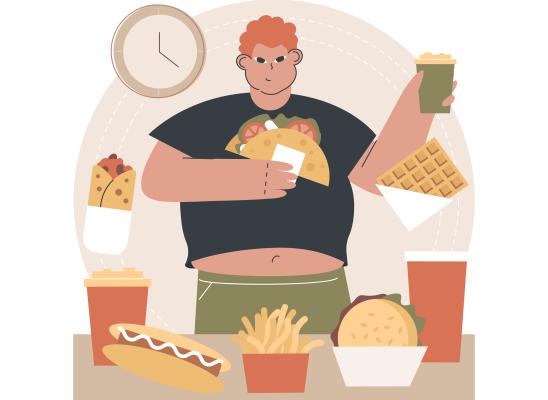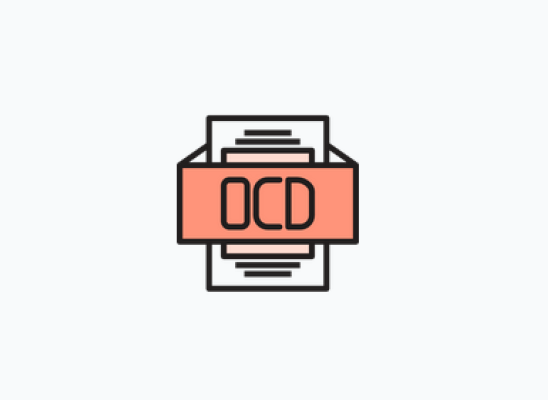Nail Biting Disorder

Online test
Find out the severity of your symptoms with this free online test
Nail biting, also known as onychophagy or onychophagia, is an oral compulsive habit. It is in some cases depicted as a parafunctional activity, the common use of the mouth for an action other than speaking, eating, or drinking. Nail biting is very common, particularly amongst children. Severe forms of nails biting are viewed as a body focused repetitive behavior (BFRB) in the DSM-IV-R and are ordered under obsessive-compulsive and related disorders in the DSM-5. The ICD-10 characterizes the practice as "other specified behavioural and emotional disorders with onset usually occurring in childhood and adolescence. Other body-focused repetitive behaviors include excoriation disorder (skin picking), dermatophagia (skin biting), and trichotillomania (the urge to pull out hair), and all of them tend to coexist with nail biting. However, not all nail biting is pathological, and the difference between harmful obsession and normal behaviour is not generally clear
Symptoms of Onychophagia
- Short nails due to constant nail biting
- Skin damage around nails
- Bleeding skin around nails
- Callouses
- Compulsive nail biting
- Painful nails due to constant nail biting
- Hangnails
Here are a few quick facts that can help you understand the disorder better
- Nail biting is very common in individuals of all ages.
- Up to 33% of children ages 7 to 10 suffer from nail biting disorder
- Nail-biting can be induced by stress, boredom, or nervousness.
- Nail biting disorder has been linked to obsessive-compulsive disorder (OCD) which makes it similar to the hair pulling disorder
- Nail biting disorder can also be linked to a sign of emotional or psychological disorders.
OCD, Trichotillomania and Nail biting disorder
Obsessive compulsive disorder (OCD) is a common chronic and long lasting disorder in which a person has uncontrollable, reoccurring thoughts (obsessions) and behaviours (compulsions) that he or she feels the urge to repeat over and over. Medical research suggests that there is a close relationship between nail biting and Obsessive compulsive disorder (OCD). Nail biting, compulsive hair pulling and OCD are similar in that they all involve “repetitive engagement in behaviours with diminished control” and both generally decrease anxiety. However, nail biting like trichotillomania has both focused and automatic components, whereas OCD type behaviors are always focused around a specific obsessive thought pattern.
A common hypothesis is that nail biting is often a coping mechanism to deal with elevated levels of turmoil, arousal or stress within an individual, and that the individual has an impaired stress response. Several behavioural studies found support in this hypothesis in that nail biting appears to be maintained by automatic reinforcement within the individual. Those individuals with that have onychophagia disorder state differing motivations for their biting, those with both OCD and onychophagia report that they will bit their nails due to a perceived contamination, whereas those with just onycophagia report that biting urges often have nothing to do with the physical state of the nails but rather something more emotional in nature.
What medicines are accessible for nail-gnawing?
A few treatment measures may help you quit gnawing your nails. Some concentrate on conduct changes and some concentrate on physical hindrances to nail-gnawing:
- Keep your nails trimmed and filed. Taking care of your nails can help reduce your nail-biting habit and encourage you to keep your nails attractive.
- Have a manicure regularly or use nail polish. Men can use a clear polish. Wearing artificial nails may stop you from biting your nails and protect them as they grow out.
- Try stress-management techniques if you bite your nails because you are anxious or stressed.
- Paint a bitter-tasting polish, such as CONTROL-IT or Thum, on your nails. The awful taste will remind you to stop every time you start to bite your nails.
- Try substituting another activity, such as drawing or writing or squeezing a stress ball or Silly Putty, when you find yourself biting your nails. If you keep a record of nail-biting, you will become more aware of the times when you bite your nails and be able to stop the habit.
- Wear gloves, cement swathes, or shaded stickers at whatever point conceivable to remind you not to nibble your nails.
- Snap a rubber band on the inside of your wrist when you start to bite your nails so you have a negative physical response to nail-biting.
Adapted from(http://www.webmd.com/anxiety-panic/tc/nail-biting-topic-overview)
Treatment options
The most common treatment, which is cheap and widely available, is to apply a clear, bitter-tasting nail polish to the nails. Normally  denatonium benzoate is used, the most bitter chemical compound known. The bitter flavor discourages the individuals nail-biting habit.
denatonium benzoate is used, the most bitter chemical compound known. The bitter flavor discourages the individuals nail-biting habit.
Psychotherapy
Psychotherapy is a talking therapy regularly used to treat emotional issues and psychological wellness conditions. Patients can discuss intense subject matters with an exceptionally prepared specialist. Studies have demonstrated that psychotherapy helped many individuals manage nail biting and adapt to the turmoil, as psychotherapist typically propose powerful courses in which one can deal with the confusion.
Cognitive behavioural therapy (CBT) is a type of psychotherapy that may be recommended. It helps patients address their thoughts about themselves, their relationships with others, and how they relate to the world around you. CBT may also involve behavioural therapy, which aims to help patients change the way they behave for example, reducing your nail biting behaviour. It's also known as habit-reversal therapy, and could include:
- educating you about your condition and how it's treated
- making you more aware of when and why you bit your nails – for example, you may bit your nails out when you're stressed
- learning a new response to carry out when you feel the urge to bit your nails out – for example, clenching your hand into a fist
- involving your parents or partner in your treatment – for example, they could praise and encourage you when you don't bit your nails
Source: http://www.nhs.uk/Conditions/trichotillomania/Pages/treatment.aspx
Online test
Find out the severity of your symptoms with this free online test
Start your journey with TrichStop
Take control of your life and find freedom from hair pulling through professional therapy and evidence-based behavioral techniques.
Start Now



